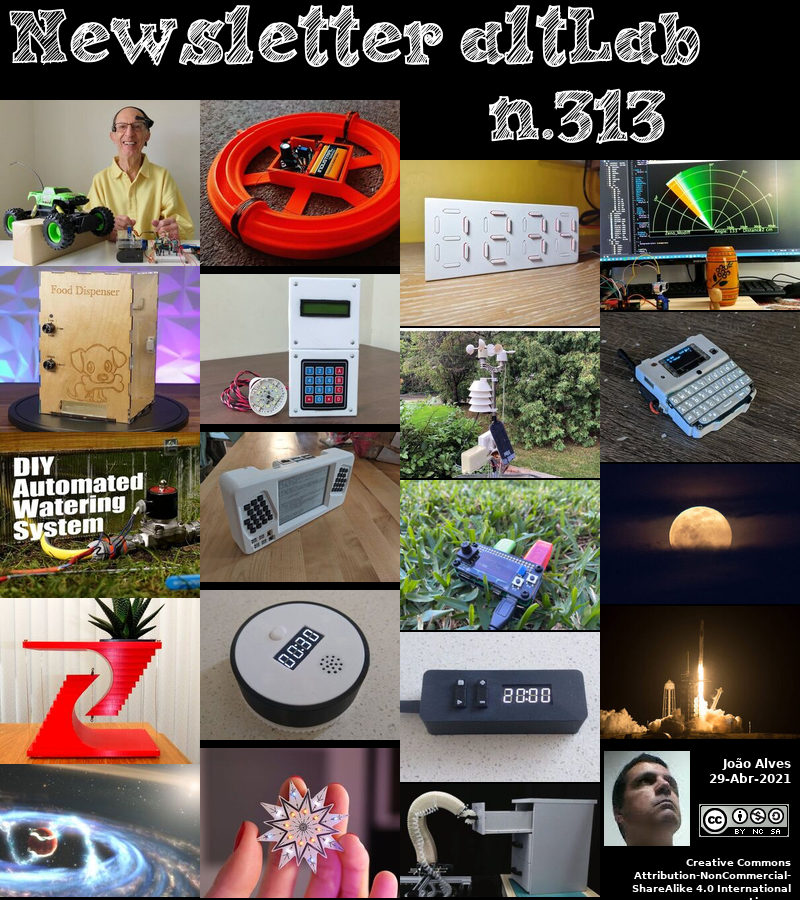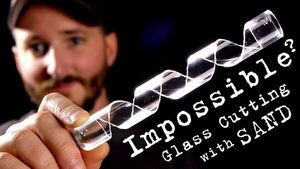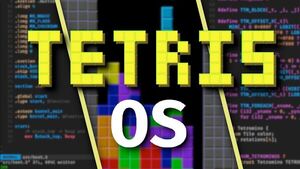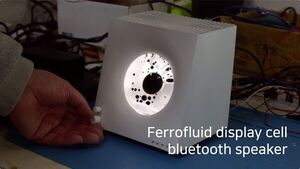2021-04-29 - Nº 313
Editorial
Esta é a Newsletter Nº 313 que se apresenta com o mesmo formato que as anteriores. Se gostar da Newsletter partilhe-a!
Todas as Newsletters encontram-se indexadas no link.
Esta Newsletter tem os seguintes tópicos:
Faz hoje anos que nascia, em 1854, o matemático, físico e astrônomo francês Henri Poincaré. Ele, na sua conjectura, afirma que se qualquer loop num determinado espaço tridimensional pode ser reduzido a um ponto, o espaço é equivalente a uma esfera. O problema permaneceu sem solução até que Grigori Perelman provou ser uma prova completa em 2003. Poincaré influenciou a cosmogonia, a relatividade e a topologia. Em matemática aplicada, ele também estudou óptica, electricidade, telegrafia, capilaridade, elasticidade, termodinâmica, teoria do potencial, teoria quântica e cosmologia. Ele é frequentemente descrito como o último universalista em matemática. Ele estudou o problema dos três corpos na mecânica celeste e as teorias da luz e das ondas electromagnéticas. Ele foi um co-descobridor (com Albert Einstein e Hendrik Lorentz) da teoria da relatividade especial.
Faz também hoje anos que nascia, em 1893, o Cientista norte-americano Harold Urey. Ele recebeu o Prémio Nobel de Química em 1934 pela sua descoberta do deutério, a forma pesada do hidrogénio (1932). Ele foi activo no desenvolvimento da bomba atómica. Ele contribuiu para a base crescente da teoria do que era amplamente aceito como a origem da Terra e de outros planetas. Em 1953, Stanley L. Miller e Urey simularam o efeito de um raio na atmosfera pré-biótica da Terra com uma descarga eléctrica numa mistura de hidrogénio, metano, amónia e água. Isto produziu uma rica mistura de aldeídos e carboxílicos e aminoácidos (como encontrados nas proteínas, adenina e outras bases de ácido nucléico). Urey calculou a temperatura dos oceanos antigos a partir da quantidade de certos isótopos em conchas fósseis.
Por fim, faz hoje anos que nascia, em 1894, a física nuclear austríaca Marietta Blau. Ela começou como uma estudante forte em matemática e física na escola e estudou física na universidade, onde escreveu sua tese sobre a absorção de raios gama (1919). No início, ela conseguiu um emprego (1921) com um fabricante de tubos de raios-X em Berlim. Em 1923, ela começou a pesquisar radioactividade com o Institut für Radiumforschung em Viena. Lá ela desenvolveu a técnica de emulsão fotográfica para o estudo da desintegração nuclear causada por raios cósmicos, e contribuiu para o desenvolvimento de tubos foto-multiplicadores. Blau foi a primeira a usar emulsões nucleares para detectar neutrões observando o recuo dos protões.
Nesta semana que passou a NASA, fez o drone Ingenuity voar mais rápido e mais longe no terceiro voo em Marte. O Ingenuity Mars Helicopter da NASA continua a bater recordes, voando mais rápido e mais longe no passado domingo, 25 de Abril de 2021, do que em qualquer teste que tenha feito na Terra. O helicóptero descolou às 4h31 EDT (1h31 PDT), ou 12h33 hora local de Marte, subindo 5 metros - a mesma altitude que no seu segundo voo. Em seguida, deslocou-se rapidamente 50 metros, pouco mais da metade do comprimento de um campo de futebol, atingindo uma velocidade máxima de 2 metros por segundo.
Também nesta semana que passou foi lançado o Kernel 5.12 do Linux. Mais uma vez Linus Torvalds anunciou o lançamento na lista de discussão do kernel do Linux, escrevendo: “… obrigado a todos que me tornaram muito calmos na semana passada, o que me deixou muito mais feliz com o lançamento final do 5.12”. De entre as novidades deste novo Kernel, destaca-se o suporte para os controladores da Nintendo 64, para os controladores dualsense da PS5, suporte para a tecnologia Adaptative Sync da Intel, mapeamento de UID em filesystems para já em FAT e ext4. Foi também melhorado o suporte para o laptops Surface da Microsoft, suporte NUMA na arquitectura RISC-V, Boot do Linux como partição root do Hypervisor da Microsoft, suporte para o hypervisor ACRN, nova ferramenta de debugging de memória kfence, remoção de um conjunto de plataformas obsoletas de ARM.
Também nesta semana que passou foi lançada a nova versão da distribuição de Linux Fedora. O Fedora 34 introduz a nova versão do GNOME 40. Passa também a usar um novo sistema de audio e video designado por Pipewire. Foi melhorado o suporte do Wayland em cima de placas gráficas NVidia. O Fedora passa a usar o Kernel 5.11 assim como o GCC 11.
Na Newsletter desta semana apresentamos diversas noticias, artigos científicos, projetos de maker assim como alguns videos interessantes. É apresentada a revista MagPI Magazine nº105 de Maio.
 João Alves ([email protected])
João Alves ([email protected])
O conteúdo da Newsletter encontra-se sob a licença  Creative Commons Attribution-NonCommercial-ShareAlike 4.0 International License.
Creative Commons Attribution-NonCommercial-ShareAlike 4.0 International License.
Novidades da Semana

NASA’s Ingenuity Mars Helicopter Flies Faster, Farther on Third Flight
"The craft’s April 25 flight was conducted at speeds and distances beyond what had ever been previously demonstrated, even in testing on Earth. NASA’s Ingenuity Mars Helicopter continues to set records, flying faster and farther on Sunday, April 25, 2021 than in any tests it went through on Earth. The helicopter took off at 4:31 a.m. EDT (1:31 a.m. PDT) , or 12:33 p.m. local Mars time, rising 16 feet (5 meters) – the same altitude as its second flight. Then it zipped downrange 164 feet (50 meters), just over half the length of a football field, reaching a top speed of 6.6 feet per second (2 meters per second). After data came back from Mars starting at 10:16 a.m. EDT (7:16 a.m. PDT), Ingenuity’s team at NASA’s Jet Propulsion Laboratory in Southern California was ecstatic to see the helicopter soaring out of view. They’re already digging through a trove of information gathered during this third flight that will inform not just additional Ingenuity flights but possible Mars rotorcraft in the future." [...]

Linux Kernel 5.12 Released, This is What’s New
"The Linux 5.12 kernel has been released – albeit a week later than original scheduled. Linus Torvalds announced the release over on the Linux kernel mailing list, writing: “…thanks to everybody who made last week very calm indeed, which just makes me feel much happier about the final 5.12 release.” He adds that despite the extra week’s grace this is “actually a fairly small release overall”. I reckon Linus’ definition of ‘small’ may differ from ours, so read on to run through the biggest changes and most notable additions proffered in the latest Linux kernel update. Most of us expect a new kernel releases to come with support for new hardware, but there are plenty of legacy devices out there that which are perfectly functional machines. For example, Linux 5.12 adds support for the Nintendo 64 —yes: the Nintendo 64! Don’t expect to see a full Linux desktop up and running on the 25 year old console yet, but this kernel update adds support for the system, Nintendo 64 game controllers, and Nintendo 64 data cartridges." [...]

Fedora Linux 34 is officially here!
"Today, I’m excited to share the results of the hard work of thousands of contributors to the Fedora Project: our latest release, Fedora Linux 34, is here! I know a lot of you have been waiting… I’ve seen more “is it out yet?? ?” anticipation on social media and forums than I can remember for any previous release. So, if you want, wait no longer — upgrade now or go to Get Fedora to download an install image. Or, if you’d like to learn more first, read on. The first thing you might notice is our beautiful new logo." [...]
Outras Notícias
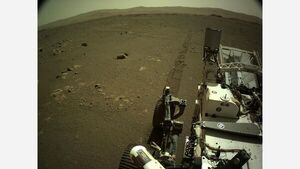
New Views of Mars Thanks to Intel Tech
"After the Perseverance rover’s landing on Mars, the world marveled at the remarkable new images from the planet’s surface. Earthlings can’t get enough of the Red Planet. And unbeknownst to most — even to some of the engineers who've been involved (more on that later) — NASA’s Mars 2020 Perseverance rover contains a vital piece of Intel-based tech that’s helping get these images beamed back to us. After traveling 293 million miles from Earth, the Perseverance spacecraft plummeted at 10,000 mph (16,000 kph) into the thin Martian atmosphere on Feb. 18, 2021. It deployed a 70-foot-wide red-striped parachute, slowed to 200 mph (320 kph), fired its eight hydrazine descent engines — and stuck the landing. We all saw the video: Hovering about 66 feet (20 meters) above Jezero Crater, the descent stage’s sky crane gently winched the 1-ton (Earth weight) Perseverance rover down onto the surface of the Red Planet." [...]
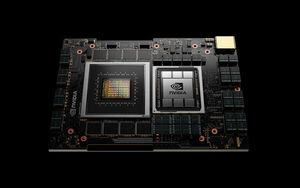
NVIDIA Announces CPU for Giant AI and High Performance Computing Workloads
"NVIDIA today announced its first data center CPU, an Arm-based processor that will deliver 10x the performance of today’s fastest servers on the most complex AI and high performance computing workloads. The result of more than 10,000 engineering years of work, the NVIDIA Grace™ CPU is designed to address the computing requirements for the world’s most advanced applications — including natural language processing, recommender systems and AI supercomputing — that analyze enormous datasets requiring both ultra-fast compute performance and massive memory. It combines energy-efficient Arm CPU cores with an innovative low-power memory subsystem to deliver high performance with great efficiency. “Leading-edge AI and data science are pushing today’s computer architecture beyond its limits – processing unthinkable amounts of data,” said Jensen Huang, founder and CEO of NVIDIA. “Using licensed Arm IP, NVIDIA has designed Grace as a CPU specifically for giant-scale AI and HPC. Coupled with the GPU and DPU, Grace gives us the third foundational technology for computing, and the ability to re-architect the data center to advance AI." [...]

Samsung’s Highest Performing SAS Enterprise SSD to Take Server Storage Performance to Next Level
"As the industry’s first 24G SAS storage based on 100+ layer vertical NAND, the PM1653 will provide maximum speed and capacity to effectively handle AI and big data workloads in enterprise servers Samsung Electronics, the world leader in advanced memory technology, today announced its launch of the industry’s highest performing 24G SAS (SAS-4) SSD ― the PM1653. Based on the latest SAS interface, the new drive can support twice the speed of the previous 12G SAS-3 generation. The PM1653 is also the industry’s first 24G SAS SSD made with sixth-generation (1xx-layer) V-NAND chips, enabling storage capacities from 800GB to 30.72TB for advanced enterprise server systems. “As the leading provider of SAS storage for a decade, Samsung has been offering the most advanced and reliable enterprise solutions in full support of the critical workloads of global server OEMs, governments and financial institutions. Samsung enterprise solutions are also accredited by the U.S. National Institute of Standards and Technology for the most powerful data security,” said Kwangil Park, senior vice president of the Memory Product Planning Team at Samsung Electronics. “Like we have done with the PM1653, Samsung will continue to collaborate with our customers to accommodate the ever-growing demand of the enterprise server market for the most uncompromising offerings available.” In order to build a robust 24G SAS ecosystem across the enterprise market, host bus adapter (HBA) system readiness is also essential." [...]
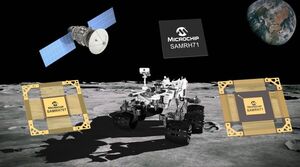
Microchip Announces the Expansion of Its Radiation-Hardened Arm Microcontroller (MCU) Family for Space Systems
"Designers can benefit from another step in the Arm Cortex-M7-based system-on-chip (SoC) commercial off-the-shelf (COTS) to rad-hard scalable solutions with the addition of embedded analog capabilities Deep space initiatives including planetary exploration, orbiter missions and space research require innovative spacecraft system technology providing connectivity and processing. To enable system designers better integration and higher performance while reducing development costs and time to market, COTS technologies and scalable solutions are increasingly used in space applications. Microchip Technology Inc. (Nasdaq: MCHP) today announced the qualification of its SAMRH71 Arm-based microprocessor (MPU) and the availability of the SAMRH707 microcontroller (MCU), both implementing ArmÒ CortexÒ-M7 SoC radiation-hardened technology. “Spacecraft and satellites are expanding in complexity to provide commercial and military operators with robust new communication and data capabilities, greater reliability and faster speeds, while the operators continuously seek to reduce cost, size and weight,” said Bob Vampola, associate vice president of Microchip’s aerospace and defense business unit. “In this environment, lowering system development costs while enabling greater capabilities and space system integration are ever more critical.” Microchip’s SAMRH71 and SAMRH707 devices were developed with the support of the European Space Agency (ESA) and Centre National D’Etudes Spatiales (CNES), the French space agency, to further research and program initiatives. “The introduction of Arm technologies for space applications opens up new perspectives by enabling the use of the same ecosystem well in place in the consumer and industrial sectors,” said David Dangla, VLSI Components Expert at CNES." [...]

STMicroelectronics Unveils Next-Generation MEMS Accelerometer for High-Performance Automotive Applications
"The STMicroelectronics AIS2IH three-axis linear accelerometer brings enhanced resolution, temperature stability, and mechanical robustness to non-safety automotive applications including anti-theft, telematics, infotainment, tilt/inclination measurement, and vehicle navigation. It also paves the way to new performance-demanding applications in automotive, medical, and industrial segments. Leveraging ST’s leading positions in both MEMS and automotive technologies, the AIS2IH ensures market-leading reliability while delivering high-performance motion sensing over a wide -40ºC to +115ºC operating temperature range. Moreover, the accelerometer features ultra-low power consumption in a compact LGA-12 land grid array package, at an ultra-competitive price. With five different operating modes, including one high-performance mode (HPM) and four low-power modes (LPM), the device supports switching between modes on the fly to optimize resolution and power consumption for the exact application requirements at any time. Together, the extended operating-temperature range with enhanced performance and cost-effectiveness enable the AIS2IH to address emerging automotive applications such as digital drive recorders, driver monitoring, vertical level sensing in vehicle suspension, and door automation." [...]

Xilinx Announces Full Production Shipments of 7nm Versal AI Core and Versal Prime Series Devices
"Xilinx, Inc. (NASDAQ: XLNX), the leader in adaptive computing, today announced that its Versal™ AI Core and Versal Prime series devices are now shipping to customers in full production volumes. Additionally, the third series in the Versal portfolio, Versal Premium, has now shipped to multiple tier-one customers through the company’s early access program. Versal is the industry’s first adaptive compute acceleration platform (ACAP). Versal ACAPs combine scalar processing engines, adaptable hardware engines, intelligent engines with leading-edge memory and interfacing technologies to deliver powerful heterogeneous acceleration for any application beyond the capabilities of an FPGA. Versal AI Core and Prime Series in Full Production The Versal AI Core series delivers the highest compute and lowest latency in the Versal portfolio, enabling breakthrough AI inference throughput and performance through its AI engines. Versal AI Core is optimized for compute-intensive applications primarily for the data center, 5G wireless, and A&D markets, including machine learning and advanced signal processing." [...]

Renesas Expands FemtoClock Timing Portfolio for High-Performance Communications and Data Center Applications
"Renesas Electronics Corporation (TSE:6723), a premier supplier of advanced semiconductor solutions, today expanded its timing solutions portfolio with a new sub-100fs point-of-use clock solution for data center, server, and network infrastructure markets. The new FemtoClock2 family includes ultra-low jitter clock generators and jitter attenuators in a small 4x4 mm2 package, enabling cost-effective and simple clock tree implementation for next-generation, high-speed interconnect designs. Featuring best-in-class jitter as low as 64fs RMS, FemtoClock2 enables customers to easily meet next-generation PAM4 requirements on new switch or router designs. With a 4x4 mm2 form factor, the FemtoClock2 family is less than one third the size of similar solutions on the market. This allows designers to place the clock source at the point of use – very close to the device receiving the clock signal – for streamlined PCB layout design, reduced cross talk, and cleaner signals. Flexibility makes the family useful in many applications." [...]
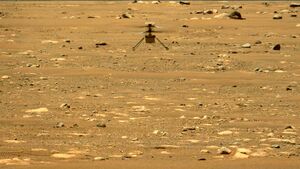
NASA's Ingenuity Mars Helicopter Logs Second Successful Flight
"NASA’s Ingenuity helicopter successfully completed its second Mars flight on April 22 – the 18th sol, or Martian day, of its experimental flight test window. Lasting 51.9 seconds, the flight added several new challenges to the first, which took place on April 19, including a higher maximum altitude, longer duration, and sideways movement. “So far, the engineering telemetry we have received and analyzed tell us that the flight met expectations and our prior computer modeling has been accurate,” said Bob Balaram, chief engineer for the Ingenuity Mars Helicopter at NASA’s Jet Propulsion Laboratory in Southern California. “We have two flights of Mars under our belts, which means that there is still a lot to learn during this month of Ingenuity.” For this second flight test at “Wright Brothers Field,” Ingenuity took off again at 5:33 a.m. EDT (2:33 a.m. PDT), or 12:33 p.m. local Mars time. But where Flight One topped out at 10 feet (3 meters) above the surface, Ingenuity climbed to 16 feet (5 meters) this time. After the helicopter hovered briefly, its flight control system performed a slight (5-degree) tilt, allowing some of the thrust from the counter-rotating rotors to accelerate the craft sideways for 7 feet (2 meters)." [...]

Orbital Marine launches world’s most powerful tidal turbine
"Scottish tidal energy company Orbital Marine Power has launched its 2MW tidal turbine from the Port of Dundee, sending it on its way to Orkney for commissioning and installation. Osprey Heavy Lift managed the operation to transfer the 680-tonne tidal turbine, dubbed O2, from the Forth Ports quayside facility in Dundee into the River Tay using a submersible barge. The launch marks the completion of the turbine build, managed by TEXO Fabrication. The O2 will now be towed to the Orkney Islands where it will undergo commissioning before being connected to the European Marine Energy Centre (EMEC), where it will become the world’s most powerful operational tidal turbine. Built with 80% of UK supply content, according to Orbital Marine, the O2 turbine started construction in the second half of 2019. From Scottish steel work and main manufacturing through to anchors from Wales and blades from the south of England – the construction of the O2 is estimated to have supported over 80 jobs within the UK economy." [...]
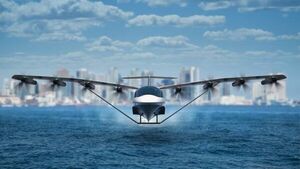
Regent is making a flying electric ferry with a top speed of 180 miles per hour
"A Boston start-up called Regent wants to make flying ferries the best way to travel between coastal cities. The start-up is developing an “electric seaglider” that can motor out of a harbor on a hydrofoil, take off at a low speed using the water as a runway, then fly over the waves at a top speed of 180 miles per hour to bring passengers to their destinations, according to co-founders CEO Billy Thalheimer and CTO Michael Klinker. The duo previously worked for a Boeing company, Aurora Flight Sciences, and both are FAA-licensed private pilots. Thalheimer told CNBC that Regent wants to make trips between coastal cities fast, safe, affordable and reliable with the smallest possible environmental footprint. (The company’s name is an acronym for Regional Electric Ground Effect Naval Transport.) The seagliders that Regent designed technically fall in the category of Wing in Ground Effect craft, or WIGs." [...]
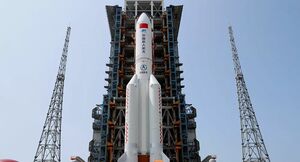
China launches first module of new space station
"China has launched a key module of a new permanent space station, the latest in Beijing's increasingly ambitious space programme. The Tianhe module - which contains living quarters for crew members - was launched from the Wenchang Space Launch Centre on a Long March-5B rocket. China hopes to have the new station operational by 2022. The only space station currently in orbit is the International Space Station, from which China is excluded. China has been a late starter when it comes to space exploration. It was only in 2003 that it sent its first astronaut into orbit, making it the third country to do so, after the Soviet Union and the US." [...]

NASA’s SpaceX Crew-2 Astronauts Headed to International Space Station
"NASA’s SpaceX Crew-2 astronauts are in orbit following their early morning launch bound for the International Space Station for the second commercial crew rotation mission aboard the microgravity laboratory. The international crew of astronauts lifted off at 5:49 a.m. EDT Friday from Launch Complex 39A at NASA’s Kennedy Space Center in Florida. The SpaceX Falcon 9 rocket propelled the Crew Dragon spacecraft with NASA astronauts Shane Kimbrough and Megan McArthur, along with JAXA (Japan Aerospace Exploration Agency) astronaut Akihiko Hoshide and ESA (European Space Agency) astronaut Thomas Pesquet, into orbit to begin a six-month science mission on the space station. During Crew Dragon’s flight, SpaceX will command the spacecraft from its mission control center in Hawthorne, California, and NASA teams will monitor space station operations throughout the flight from Mission Control Center at the agency’s Johnson Space Center in Houston. “It has been an incredible year for NASA and our Commercial Crew Program, with three crewed launches to the space station since last May,” said NASA Acting Administrator Steve Jurczyk. “This is another important milestone for NASA, SpaceX, and our international partners at ESA and JAXA, and for the future of scientific research on board the space station." [...]

The Next Full Moon Is a "Supermoon" Pink Moon
"The Next Full Moon is the Pink Moon, the Sprouting Grass Moon, the Egg Moon, the Fish Moon, the Paschal Moon (for Eastern Christianity), Hanuman Jayanti, Bak Poya, and a Supermoon. The next full Moon will be late Monday night, April 26, 2021, appearing opposite the Sun in Earth-based longitude at 11:32 p.m. EDT. This will be the next day from the Atlantic Daylight Savings timezone eastward across Africa, Europe, Asia, and Australia to the International Date Line. Most commercial calendars are based on Greenwich Mean Time (GMT) or Coordinated Universal Time (UTC) and will show this full Moon occurring on Tuesday, April 27, 2021. The Moon will appear full for about three days around this time, from Sunday night through Wednesday morning. In the 1930s the Maine Farmer's Almanac began publishing American Indian Moon names for the months of the year." [...]

With Goals Met, NASA to Push Envelope With Ingenuity Mars Helicopter
"Now that NASA’s Ingenuity Mars Helicopter has accomplished the goal of achieving powered, controlled flight of an aircraft on the Red Planet, and with data from its most recent flight test, on April 25, the technology demonstration project has met or surpassed all of its technical objectives. The Ingenuity team now will push its performance envelope on Mars. The fourth Ingenuity flight from “Wright Brothers Field,” the name for the Martian airfield on which the flight took place, is scheduled to take off Thursday, April 29, at 10:12 a.m. EDT (7:12 a.m. PDT, 12:30 p.m. local Mars time), with the first data expected back at NASA’s Jet Propulsion Laboratory in Southern California at 1:21 p.m. EDT (10:21 a.m. PDT). “From millions of miles away, Ingenuity checked all the technical boxes we had at NASA about the possibility of powered, controlled flight at the Red Planet,” said Lori Glaze, director of NASA’s Planetary Science Division. “Future Mars exploration missions can now confidently consider the added capability an aerial exploration may bring to a science mission.” The Ingenuity team had three objectives to accomplish to declare the technology demo a complete success: They completed the first objective about six years ago when the team demonstrated in the 25-foot-diameter space simulator chamber of JPL that powered, controlled flight in the thin atmosphere of Mars was more than a theoretical exercise. The second objective – to fly on Mars – was met when Ingenuity flew for the first time on April 19." [...]
Ciência e Tecnologia

How to get salt out of water: Make it self-eject
"Crystallizing salts can grow “legs,” then tip over and fall away, potentially helping to prevent fouling of metal surfaces, researchers find. About a quarter of a percent of the entire gross domestic product of industrialized countries is estimated to be lost through a single technical issue: the fouling of heat exchanger surfaces by salts and other dissolved minerals. This fouling lowers the efficiency of multiple industrial processes and often requires expensive countermeasures such as water pretreatment. Now, findings from MIT could lead to a new way of reducing such fouling, and potentially even enable turning that deleterious process into a productive one that can yield saleable products. The findings are the result of years of work by recent MIT graduates Samantha McBride PhD ’20 and Henri-Louis Girard PhD ’20 with professor of mechanical engineering Kripa Varanasi. The work, reported today in the journal Science Advances, shows that due to a combination of hydrophobic (water repelling) surfaces and heat, dissolved salts can crystallize in a way that makes it easy to remove them from the surface, in some cases by gravity alone." [...]

“Colloidal gels,” ubiquitous in everyday products, divulge their secrets
"Study explores the mechanical properties of these materials as they evolve from elastic gels to glassy solids. Researchers at MIT have developed a new method for determining the structure and behavior of a class of widely used soft materials known as weak colloidal gels, which are found in everything from cosmetics to building materials. The study characterizes the gels over their entire evolution, as they change from mineral solutions to elastic gels and then glassy solids. The work uncovers the microstructural mechanisms underlying how the gels change naturally over time, and how their elastic properties also change, both over time and depending on the rate at which they are experimentally deformed. This characterization should allow further study, prediction, and perhaps manipulation of the gels’ behavior, opening doors to advances in such areas as drug delivery and food production, in which these gels are common ingredients, as well as in applications ranging from water purification to nuclear waste disposal, which use these colloidal gels in a crystallized, porous form known as zeolites. “We believe this new overall picture and understanding of the gelation and subsequent aging process is of great importance for material scientists who work on soft matter,” says Gareth McKinley, the School of Engineering Professor of Teaching Innovation and professor of mechanical engineering at MIT." [...]

SMART investigates the science behind varying performance of different colored LEDs
"The findings pave the way to develop more efficient next-gen LEDs that cover the entire visible spectrum. Researchers from the Low Energy Electronic Systems (LEES) interdisciplinary research group at Singapore-MIT Alliance for Research and Technology (SMART), MIT’s research enterprise in Singapore, together with MIT and National University of Singapore (NUS), have found a method to quantify the distribution of compositional fluctuations in the indium gallium nitride (InGaN) quantum wells at different indium concentrations. InGaN light emitting diodes (LEDs) have revolutionized the field of solid-state lighting due to their high efficiencies and durability, and low costs. The color of the LED emission can be changed by varying the indium concentration in the InGaN compound, giving InGaN LEDs the potential to cover the entire visible spectrum. InGaN LEDs with relatively low amounts of indium compared to gallium, such as the blue, green, and cyan LEDs, have enjoyed significant commercial success for communication, industry, and automotive applications. However, LEDs with higher indium concentrations, such as red and amber LEDs, suffer from a drop in efficiency with the increasing amount of indium." [...]
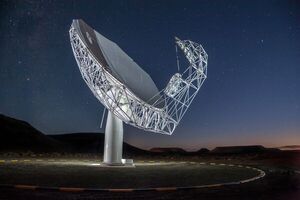
Radio astronomers discover 8 new millisecond pulsars
"A group of astronomers has discovered 8 millisecond pulsars located within the dense clusters of stars, known as “globular clusters'', using South Africa’s MeerKAT radio telescope. Millisecond pulsars are neutron stars, the most compact star known, that spin up to 700 times per second. This is the first pulsar discovery using the MeerKAT antennas and it comes from the synergic work of two international collaborations, TRAPUM and MeerTIME, with the findings detailed in a Monthly Notices of the Royal Astronomical Society paper published today. Millisecond pulsars are extremely compact stars mainly made up of neutrons, and are amongst the most extreme objects in the universe: they pack hundreds of thousands of times the mass of the Earth in a sphere with a diameter of about 24 km; and spin at a rate of hundreds of rotations per second. They emit a beam of radio waves that are detected by the observer at every rotation, like a lighthouse. The formation of these objects is highly enhanced in the star-rich environments at the centres of globular clusters." [...]

Exoplanet is Gobbling Up Gas and Dust as it Continues to Build Mass
"The Hubble Space Telescope has allowed astronomers from The University of Texas at Austin to get a rare look at a young, Jupiter-sized planet that is growing by feeding off material surrounding a young star 370 light-years from Earth. “We just don’t know very much about how giant planets grow,” said Brendan Bowler, an assistant professor of astronomy at UT Austin. “This planetary system gives us the first opportunity to witness material falling onto a planet. Our results open up a new area for this research.” Though more than 4,000 exoplanets have been cataloged, only about 15 have been directly photographed by telescopes. And the planets are so far away and small that they simply look like dots even in the best photos. The team’s fresh technique for using Hubble to directly image this planet paves a new route for further exoplanet research, especially during a planet’s formative years." [...]
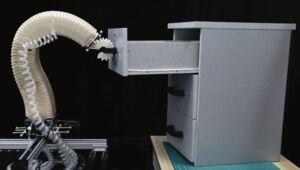
Elephant-trunk-shaped Robotic Arm Performs Daily Interactions like Human
"Skillful robots are always the pursuit of robotics research. Inspired by nature, researchers have designed soft-bodied robotic arms which can easily perform tasks, like surgery, that rigid robots require complicated computation. Yet performing interactions such as opening doors in daily life for robots remains challenging, due to the complexity and variety of real environments. Illuminated by the way human interact with daily objects, team led by Professor CHEN Xiaoping of the University of Science and Technology of China (USTC) proposed a hierarchical control system and demonstrated how it helps an elephant-trunk-shaped soft robotic arm to perform daily interactions in unstructured environments. To perform simple behaviors like opening doors and pulling drawers, a human only needs to move the hand backward after grasping the handle without accurately calculation, because of the passive compliance of the arm. The proposed hierarchical control system imitates this intuition." [...]

The Future Looks Bright for Infinitely Recyclable Plastic
"A new environmental and technological analysis suggests that a revolutionary eco-friendly plastic is almost ready to hit the shelves Plastics are a part of nearly every product we use on a daily basis. The average person in the U.S. generates about 100 kg of plastic waste per year, most of which goes straight to a landfill. A team led by Corinne Scown, Brett Helms, Jay Keasling, and Kristin Persson at Lawrence Berkeley National Laboratory (Berkeley Lab) set out to change that. Less than two years ago, Helms announced the invention of a new plastic that could tackle the waste crisis head on. Called poly(diketoenamine), or PDK, the material has all the convenient properties of traditional plastics while avoiding the environmental pitfalls, because unlike traditional plastics, PDKs can be recycled indefinitely with no loss in quality. Now, the team has released a study that shows what can be accomplished if manufacturers began using PDKs on a large scale." [...]

Nanostructured device stops light in its tracks
"MIT researchers develop compact on-chip device for detecting electric-field waveforms with attosecond time resolution. Understanding how light waves oscillate in time as they interact with materials is essential to understanding light-driven energy transfer in materials, such as solar cells or plants. Due to the fantastically high speeds at which light waves oscillate, however, scientists have yet to develop a compact device with enough time resolution to directly capture them. Now, a team led by MIT researchers has demonstrated chip-scale devices that can directly trace the weak electric field of light waves as they change in time. Their device, which incorporates a microchip that uses short laser pulses and nanoscale antennas, is easy to use, requiring no special environment for operation, minimal laser parameters, and conventional laboratory electronics. The team’s work, published earlier this month in Nature Photonics, may enable the development of new tools for optical measurements with applications in areas such as biology, medicine, food safety, gas sensing, and drug discovery." [...]

Less Innocent Than it Looks
"Researchers in the materials department in UC Santa Barbara’s College of Engineering have uncovered a major cause of limitations to efficiency in a new generation of solar cells. Various possible defects in the lattice of what are known as hybrid perovskites had previously been considered as the potential cause of such limitations, but it was assumed that the organic molecules (the components responsible for the “hybrid” moniker) would remain intact. Cutting-edge computations have now revealed that missing hydrogen atoms in these molecules can cause massive efficiency losses. The findings are published in a paper(link is external) titled “Minimizing hydrogen vacancies to enable highly efficient hybrid perovskites,” in the April 29 issue of the journal Nature Materials. The remarkable photovoltaic performance of hybrid perovskites has created a great deal of excitement, given their potential to advance solar-cell technology. “Hybrid” refers to the embedding of organic molecules in an inorganic perovskite lattice, which has a crystal structure similar to that of the perovskite mineral (calcium titanium oxide)." [...]

New 2D superconductor forms at higher temperatures than ever before
"New interfacial superconductor has novel properties that raise new fundamental questions and might be useful for quantum information processing or quantum sensing. Interfaces in solids form the basis for much of modern technology. For example, transistors found in all our electronic devices work by controlling the electrons at interfaces of semiconductors. More broadly, the interface between any two materials can have unique properties that are dramatically different from those found within either material separately, setting the stage for new discoveries. Like semiconductors, superconducting materials have many important implications for technology, from magnets for MRIs to speeding up electrical connections or perhaps making possible quantum technology. The vast majority of superconducting materials and devices are 3D, giving them properties that are well understood by scientists." [...]

Polymer-Based Coatings on Metallic Implants Improve Bone-Implant Integration
"Traffic accidents, tumor resections, and congenital diseases can cause significant trauma, which can lead to large bone deformations and/or bone loss. Although bone has some capacity to regenerate, large bone defects cannot be healed without major medical procedures. In these situations, metallic implants are widely used, but the bioinertness of such implants poses a major challenge in bone tissue engineering. Bioinert metal implants lack bone integration, loosen over time, and may lead to adverse reactions around the area in which they are implanted. In Biointerphases, by AIP Publishing, researchers from Middle East Technical University in Turkey showcase a variety of approaches that are alternatives to metallic implants and use natural polymer coatings to improve bone-implant integration, also known as osseointegration. “We utilized a soft structure, which is very similar to human tissues, and placed this structure between human or animal bone and a metal surface,” said author Zafer Evis." [...]

Researchers Demonstrate Fully Recyclable Printed Electronics
"New technique reclaims nearly 100% of all-carbon-based transistors while retaining future functionality of the materials Engineers at Duke University have developed the world’s first fully recyclable printed electronics. By demonstrating a crucial and relatively complex computer component — the transistor — created with three carbon-based inks, the researchers hope to inspire a new generation of recyclable electronics to help fight the growing global epidemic of electronic waste. The work appears online April 26 in the journal Nature Electronics. “Silicon-based computer components are probably never going away, and we don’t expect easily recyclable electronics like ours to replace the technology and devices that are already widely used,” said Aaron Franklin, the Addy Professor of Electrical and Computer Engineering at Duke. “But we hope that by creating new, fully recyclable, easily printed electronics and showing what they can do, that they might become widely used in future applications.” As people worldwide adopt more electronics into their lives, there’s an ever-growing pile of discarded devices that either don’t work anymore or have been cast away in favor of a newer model. According to a United Nations estimate, less than a quarter of the millions of pounds of electronics thrown away each year is recycled." [...]

Ion Beams Mean a Quantum Leap for Color-Center Qubits
"A new way to form self-aligned ‘color centers’ promises scalability to over 10,000 qubits for applications in quantum sensing and quantum computing. Achieving the immense promise of quantum computing requires new developments at every level, including the computing hardware itself. A Lawrence Berkeley National Laboratory (Berkeley Lab)-led international team of researchers has discovered a way to use ion beams to create long strings of “color center” qubits in diamond. Their work is detailed in the journal Applied Physics Letters. The authors includes several from Berkeley Lab: Arun Persaud, who led the study, and Thomas Schenkel, head of the Accelerator Technology and Applied Physics (ATAP) Division’s Fusion Science & Ion Beam Technology Program, as well as Casey Christian (now with Berkeley Lab’s Physics Division), Edward Barnard of Berkeley Lab’s Molecular Foundry, and ATAP affiliate Russell E. Lake. Creating large numbers of high-quality quantum bits (qubits), in close enough proximity for coupling to each other, is one of the great challenges of quantum computing." [...]
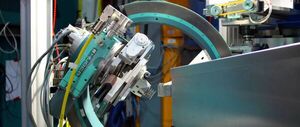
Energy-saving gas turbines from the 3D printer
"3D printing has opened up a completely new range of possibilities. One example is the production of novel turbine buckets. However, the 3D printing process often induces internal stress in the components which can in the worst case lead to cracks. Now a research team has succeeded in using neutrons from the Technical University of Munich (TUM) research neutron source reactor for non-destructive detection of this internal stress – a key achievement for the improvement of the production processes. Gas turbine buckets have to withstand extreme conditions: They are exposed to tremendous centrifugal forces under high pressure and at high temperatures. In order to further maximize energy yields, the buckets have to hold up to temperatures which are actually higher than the melting point of the material." [...]

New frontier for 3d printing developed state-of-the-art soft materials able to self-heal
"The scientific community is focusing its research into the multiple applications of Hydrogels, polymeric materials which contains a large amount of water, that have the potential to reproduce the features of biological tissues. This aspect is particularly significant in the field of regenerative medicine, which since a long time has already recognised and been using the characteristics of these materials. In order to be used effectively to replace organic tissues, hydrogels must meet two essential requirements: possessing great geometric complexity and, after suffering of a damage, being able to self-heal independently, exactly like living tissues. The development of these materials may now be easier, and cheaper, thanks to the use of 3D printing: the researchers in the MP4MNT (Materials and Processing for Micro and Nanotechnologies) team of the Department of Applied Science and Technology of the Politecnico di Torino, coordinated by Professor Fabrizio Pirri, have demonstrated, for the first time, the possibility of manufacturing hydrogels with complex architectures capable of self-healing following a laceration, thanks to 3D printing activated by light. The research was published by the prestigious journal Nature Communication in an article entitled “3D-printed self-healing hydrogels via Digital Light Processing” (DOI 10.1038/s41467-021-22802-z). Up to now, hydrogels either with self-healing properties or modellable in complex architectures using 3D printing, had already been created in the laboratory, but in the present case, the discovered solution encompasses both features: architectural complexity and the ability to self-heal following damage." [...]

Reducing blue light with a new type of LED that won’t keep you up all night
"To be more energy efficient, many people have replaced their incandescent lights with light-emitting diode (LED) bulbs. However, those currently on the market emit a lot of blue light, which has been linked to eye troubles and sleep disturbances. Now, researchers reporting in ACS Applied Materials & Interfaces have developed a prototype LED that reduces — instead of masks — the blue component, while also making colors appear just as they do in natural sunlight. LED light bulbs are popular because of their low energy consumption, long lifespan and ability to turn on and off quickly. Inside the bulb, an LED chip converts electrical current into high-energy light, including invisible ultraviolet (UV), violet or blue wavelengths. A cap that is placed on the chip contains multiple phosphors — solid luminescent compounds that convert high-energy light into lower-energy visible wavelengths." [...]

New Law of Physics Helps Humans and Robots Grasp the Friction of Touch
"Although robotic devices are used in everything from assembly lines to medicine, engineers have a hard time accounting for the friction that occurs when those robots grip objects – particularly in wet environments. Researchers have now discovered a new law of physics that accounts for this type of friction, which should advance a wide range of robotic technologies. “Our work here opens the door to creating more reliable and functional haptic and robotic devices in applications such as telesurgery and manufacturing,” says Lilian Hsiao, an assistant professor of chemical and biomolecular engineering at North Carolina State University and corresponding author of a paper on the work. At issue is something called elastohydrodynamic lubrication (EHL) friction, which is the friction that occurs when two solid surfaces come into contact with a thin layer of fluid between them. This would include the friction that occurs when you rub your fingertips together, with the fluid being the thin layer of naturally occurring oil on your skin. But it could also apply to a robotic claw lifting an object that has been coated with oil, or to a surgical device that is being used inside the human body." [...]
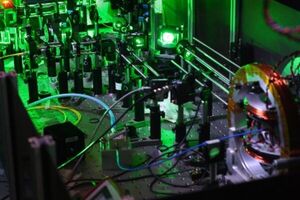
Machine learning algorithm helps unravel the physics underlying quantum systems
"Scientists from the University’s Quantum Engineering Technology Labs (QETLabs) have developed an algorithm that provides valuable insights into the physics underlying quantum systems - paving the way for significant advances in quantum computation and sensing, and potentially turning a new page in scientific investigation. In physics, systems of particles and their evolution are described by mathematical models, requiring the successful interplay of theoretical arguments and experimental verification. Even more complex is the description of systems of particles interacting with each other at the quantum mechanical level, which is often done using a Hamiltonian model. The process of formulating Hamiltonian models from observations is made even harder by the nature of quantum states, which collapse when attempts are made to inspect them. In the paper, Learning models of quantum systems from experiments,published in Nature Physics, quantum mechanics from Bristol’s QET Labs describe an algorithm which overcomes these challenges by acting as an autonomous agent, using machine learning to reverse engineer Hamiltonian models. The team developed a new protocol to formulate and validate approximate models for quantum systems of interest." [...]
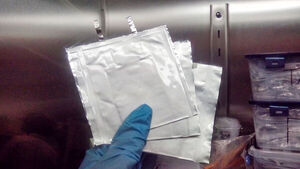
Battery parts can be recycled without crushing or melting
"New recycling method replenishes lithium in electrodes while keeping existing structure intact – and performance is nearly as good as new ones The proliferation of electric cars, smartphones, and portable devices is leading to an estimated 25 percent increase globally in the manufacturing of rechargeable batteries each year. Many raw materials used in the batteries, such as cobalt, may soon be in short supply. The European Commission is preparing a new battery decree, which would require the recycling of 95 percent of the cobalt in batteries. Yet existing battery recycling methods are far from perfect. Researchers at Aalto University have now discovered that electrodes in lithium batteries containing cobalt can be reused as is after being newly saturated with lithium. In comparison to traditional recycling, which typically extracts metals from crushed batteries by melting or dissolving them, the new process saves valuable raw materials, and likely also energy." [...]

Sensors eliminate sparking risk in hydrogen vehicles
"Hydrogen fuel-cell vehicles – electric cars without the plug – made safer Hydrogen as a clean, renewable alternative to fossil fuels is part of a sustainable-energy future, and very much already here. However, lingering concerns about flammability have limited widespread use of hydrogen as a power source for electric vehicles. Previous advances have minimized the risk, but new research from the University of Georgia now puts that risk in the rearview mirror. Hydrogen vehicles can refuel much more quickly and go farther without refueling than today’s electric vehicles, which use battery power. But one of the final hurdles to hydrogen power is securing a safe method for detecting hydrogen leaks. A new study published in Nature Communications documents an inexpensive, spark-free, optical-based hydrogen sensor that is more sensitive — and faster — than previous models." [...]
3D motion tracking system could streamline vision for autonomous tech
"Transparent optical sensor arrays combine with a specialized neural network in new University of Michigan prototype A new real-time, 3D motion tracking system developed at the University of Michigan combines transparent light detectors with advanced neural network methods to create a system that could one day replace LiDAR and cameras in autonomous technologies. While the technology is still in its infancy, future applications include automated manufacturing, biomedical imaging and autonomous driving. A paper on the system is published in Nature Communications. The imaging system exploits the advantages of transparent, nanoscale, highly sensitive graphene photodetectors developed by Zhaohui Zhong, U-M associate professor of electrical and computer engineering, and his group. They’re believed to be the first of their kind. “The in-depth combination of graphene nanodevices and machine learning algorithms can lead to fascinating opportunities in both science and technology,” said Dehui Zhang, a doctoral student in electrical and computer engineering." [...]

Patching up your health
"Researchers at Osaka University and JOANNEUM RESEARCH develop ultrathin self-powered e-health patches that can monitor a user’s pulse and blood pressure, which may lead to new flexible motion-based energy harvesting devices Scientists at Osaka University, in cooperation with JOANNEUM RESEARCH (Weiz, Austria), introduced wireless health monitoring patches that use embedded piezoelectric nanogenerators to power themselves with harvested biomechanical energy. This work may lead to new autonomous health sensors as well as battery-less wearable electronic devices. As wearable technology and smart sensors become increasingly popular, the problem of providing power to all of these devices become more relevant. While the energy requirements of each component may be modest, the need for wires or even batteries become burdensome and inconvenient. That is why new energy harvesting methods are needed. Also, the ability for integrated health monitors to use ambient motion to both power and activate sensors will help accelerate their adoption in doctor’s offices." [...]
Documentação
A documentação é parte essencial do processo de aprendizagem e a Internet além de artigos interessantes de explorar também tem alguma documentação em formato PDF interessante de ler. Todos os links aqui apresentados são para conteúdo disponibilizado livremente pelo editor do livro.
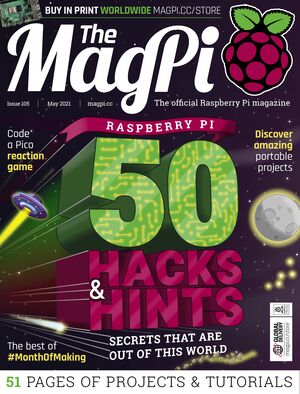
The MagPi 105
"Inside The MagPi magazine #105 - 50 Hacks & Hints. The Raspberry Pi secrets that make you a better maker. - Discover the 3/4 Star Wars arcade cabinet. Just like the amazing original; but smaller. - Teach with an LCD chalkboard. Dede Mitchell’s amazing learning resource combines a classic chalkboard with an ultra-modern LCD screen." [...]
Projetos Maker
Diversos Projetos interessantes.
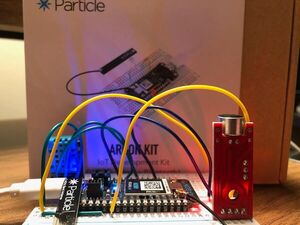
Workspace Environment Device
"This a device that will monitor the ambient sound and temperature of a workspace environment. Background: This project is designed to alert you whenever your workspace environment is not within adequate limits. We decided to make this project since we're college students always on a computer doing homework or studying. Working under the right conditions will allow us to work comfortably and efficiently. The sensors used in this project were a temperature/ humidity sensor and a big sound sensor. Temperature/ Humidity Sensor: The purpose of the temperature/ humidity sensor is to read the temperature of your workspace." [...]

Burn Prevention Alert System
"To prevent burn injuries from hot appliance. What problem are you solving? We are solving the problem of preventing burn injuries with the use of a PIR motion sensor, and an IR contact less temperature sensor. When the IR temperature sensor detects a temperature greater than 40 degree Celsius and a motion is detected by the PIR motion senor at the same time, the external LED and the D7 pin on the Argon board will light up. By doing so the system will notify the user to prevent themselves from touching the hot appliance and prevent burn injuries. How is it useful?" [...]
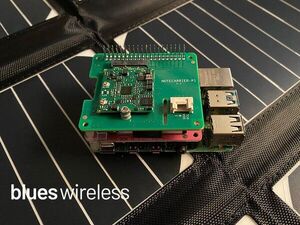
Solar-Powered Crypto Mining with Raspberry Pi
"Learn how to create a solar-powered cryptocurrency "mining rig" with cloud-based reporting on a Raspberry Pi using a PiJuice and Notecard. So you're ready to cash in on this cryptocurrency thing, but you're also concerned about the electricity consumed in order to mine your own crypto? Well, I have good news and bad news for you. The good news is cryptocurrency mining on solar power is entirely possible. In fact, you could argue it's critical for the sustainability of cryptocurrency (and other Blockchain-related) activities. According to the Sierra Club the annual power consumption of Bitcoin-related activities alone is comparable to a country the size of Argentina." [...]
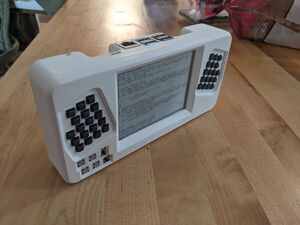
Paper Pi Handheld
"This is the Raspberry Pi E-Ink Handheld, an art project with a few goals in mind: Implement a reliable battry power and charging system Custom thumb Keyboard with the Miryoku layout that I wanted more experience with. Also an opportunity to hand-wire a Keyboard. Put this eink dispiay to use. It's console centric, and seemed like a good opportunity to get better with console tools. E.G. becoming proficient with "screen"." [...]
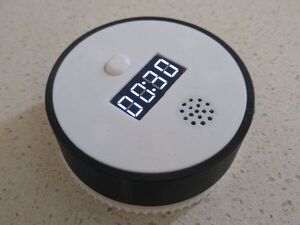
Twist-to-Set Kitchen Timer
"A hand-held twist-to-set countdown timer for your kitchen. Recently I built an Attiny85 Twist-to-Set Kitchen Timer by bobson.h. After finishing the build, I found that the optical rotary encoder had a number of problems which I won't go into here. Instead I decided to start over and redesign the mechanism to use a mechanical rotary encoder. The circuit is designed around a ATtiny3216 microprocessor. This 20pin device has enough IO pins for the 4-Digit 7-Segment clock display, the rotary encoder output, a push button switch and speaker." [...]
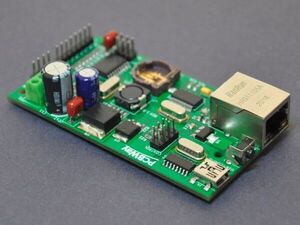
NTP Based Digital Clock Panel Driver
"Highly accurate, Ethernet base, 7-segment clock driver with built-in NTP client. This project introduces an open-source, ATmega328 based, configurable NTP clock with a 2.3-inch, 7-segment display driver. This clock automatically obtains time from the configured NTP server and updates the date and time of the built-in RTC (real-time clock). If the connection to the NTP server is lost, the clock continues to run using its built-in RTC. All the parameters of this clock can configure using its USB base serial terminal. The firmware of this clock supports both static and DHCP addressing modes." [...]
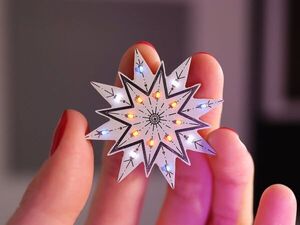
ATtiny13A PCB Star Wearable
"A twinkly star PCB ornament. I've designed this tiny twinkly star for JLCPCB's Christmas decorations design challenge, but I only got to order & assemble it now, so I've repurposed it as a wearable for now. This was just a fun and quick project, so it's super simple: the LEDs are controlled by an ATtiny13A microcontroller and powered by a 3V CR1225 battery. And it's only 4x4cm wide! " [...]
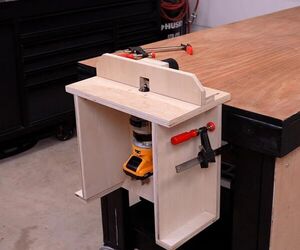
How to Build Benchtop Router Table
"A benchtop router table is a must if you are a DIYer, working on a job site, or off of a truck. I love my full-size router table, but they can get costly. With the benchtop router, you can connect it to the top of the bench or to the side of a worktable. In this post, I’ll show you how easy it is to build one on your own. Keep in mind this is built for a cordless trim router, but it could be used for a 1/4 trim router or even a full-size router. This is a compact router table that is lightweight and stable." [...]
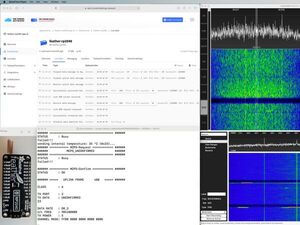
Connect Your Adafruit Feather RP2040 to The Things Network
"This project will guide you through connecting your Adafruit Feather RP2040 board to The Thing Networks using LoRaWAN communications. The focus will be on basic LoRaWAN communications, where the board will periodically send its internal temperature and messages sent to the board will be used to control the built-in LED. While the guide focuses on the Adafruit Feather RP2040 board, any board equipped with Raspberry Pi's RP2040 microcontroller (MCU), such as the Raspberry Pi Pico, can be used. You will also need a Semtech SX1276 radio module or breakout, such as the Adafruit RFM95W LoRa Radio Transceiver Breakout - 868 or 915 MHz - RadioFruit, if you are not using the Adafruit LoRa Radio FeatherWing - RFM95W 900 MHz - RadioFruit used in this guide. What is LoRaWAN? LoRaWAN is a networking protocol specification for Low Power Wider Area Networks." [...]
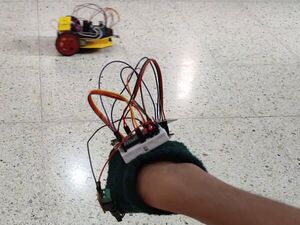
Gesture Controlled Car using NRF24L01 and MPU6050
"This project shows how to make a Gesture Controlled Car using NRF24L01 Transceiver, MPU6050 Accelerometer and Gyroscope, and Arduino. This project has two parts, transmitter and receiver. The transmitter section has an Arduino NANO, MPU6050 and NRF24L01. The receiver section consists of an Arduino UNO, NRF24L01, two DC motors, and an L298N motor driver. Arduino NANO continuously gets data from MPU6050. NRF24 module connected to NANO transmits this data to NRF24 module connected to Arduino UNO on the receiver." [...]

Room Light Monitoring Project Using Z-Score Analysis
"This system gives the value of light intensity in your room. If value is suddenly increases or decreases then it sends you an alert. There is system from which you get the value of the intensity of light in your room. yahh Room Light Monitoring system or Alert System is such a useful IoT tool or project. This tool can be used in many ways, such as to check the lighting condition of the room, i.e whether the room looks perfect or not? The other use of this system is that if the lights of the room are off and someone enters in your room without your notice and if this system is connected then it send you an alert on your phone." [...]
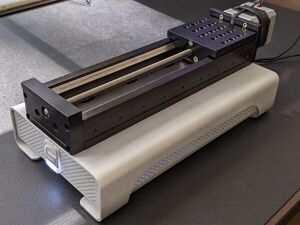
Stepino
"Old linear stage + Old HDD case = Modern piece of test equipment The purpose of this build is to have a handy, desktop stage that I can use for focus stacking experiments. This particular stage will hold a DSLR and be controlled via a C# Desktop App. All I really need is a Goto position function - so this motor is fine (No encoder, just a homing limit switch). This Arduino Leonardo-type board is great because it is designed for keyboard feedback, so the serial communication implementation went very smoothly. The next step was to take apart what I had on the table and breadboard it. This G-Drive case is perfectly sized for the stage and there is plenty of room for the controllers." [...]
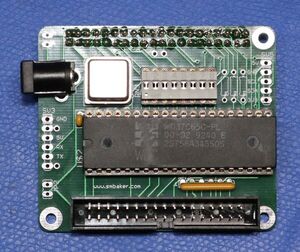
Raspberry Pi Floppy Controller Board
"Purpose If there’s one criticism I hear more often than any other about the pi, it’s “I wish my Raspberry Pi had a floppy drive“. It’s really shocking that the pi doesn’t have the ubiquitous 34-pin floppy header that we all know and love. How else are you supposed to interface your Tandon TM100-2A or your Teac FD-55BR or even, for you cutting edge folks, your Sony MFP290 3.5” high density drive? So I set along to create this much needed had, the missing link between the raspberry pi and the floppy disk drive. Design I’ve used the WD37C65 floppy controller IC a few times in the past, most notably as part of a floppy interface project for the RC2014 computer. I’ve previously played with the RomWBW CP/M distribution for the RC2014, and the floppy drive that’s contained as part of it." [...]
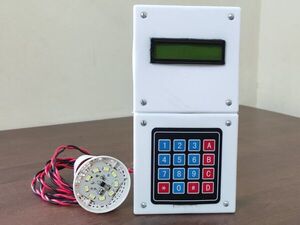
Arduino Password Protected Lock With 4*4 Keypad And Lcd
"This Project Which Iam Sharing To You Is A Password Protected Lock System With Lcd Which Is Very Simple To Make So Lets Get Started This is an arduino security lock system which includes 4*4 keypad, relay module and an i2c lcd display to show the text. Its a very simple project to make does not require lot of skill and ideology about arduino and arduino coding, this is a project which I mainly focused on the security purpose if you like what I make. " [...]

Key Finder Device
"Hi every one this project is a Key finders, also known as key locators, or electronic finders, are small electronic devices used to locate misplaced or stolen objects, such as keys, luggage, pets, or tools, and to transmit alerts. e.g., that one's restaurant table is ready or a nurse is needed. Some key finders beep or flash lights on demand. Components required 1. Hc-05 2. Attiny 45/85 IC 3." [...]
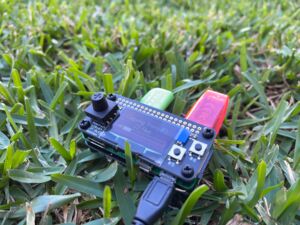
Raspberry Pi Zero USB Copier
"I was looking for stand alone “headless” Raspberry Pi USB Copier software and stumbled upon Luke Hutchison’s “usb-copier” which allows you to copy, view and wipe USB sticks. After seeing the picture of it utilizing the Adafruit 128×64 OLED Raspberry Pi bonnet and the Zero4U Shield, I instantly ordered both. With little information on how to get this running on the GitHub page and not knowing a thing about Java, this took a little bit of playing around and also reaching out to the developer for help. While this was a fun little project to complete, ultimately it doesn’t fulfill my use case. This program uses Rsync to copy files from one USB stick to another, which is great if it’s just random files but I want to be able to copy boot disks like Windows and recovery USB sticks for arcade games. This would require sector to sector copying like dd." [...]

Sailor Hat with ESP32
"Sailor Hat with ESP32 (SH-ESP32) is a powerful microcontroller development board for the marine environment. With SH-ESP32 you can easily create all kinds of sensors and control interfaces for your boat. Examples include RPM or fuel and water tank level meters, bilge alarms, chain counters, electrical compasses, attitude sensors, and so on. Control interface examples include automatic engine room blower control, smart light switching, or smart fridge thermostats. It integrates easily both to Signal K as well as NMEA 2000 and can be used as a NMEA 2000 gateway device. SH-ESP32 can be plugged directly to any 12V or 24V power system." [...]
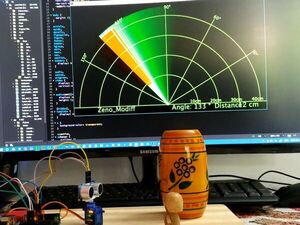
Arduino Radar
"Simple Arduino Radar Project With Arduino IDE & Processing In this project we gonna make an arduinoradar with arduinoIDE and processing, this project uses arduino, ultrasonic sensor and servomotor, the realtime analysis is done in the processing pde, after uploading the code this is a simple project which can be made within 2 hours simple and easy. if you like what you see, a to my channelis appreciative and supportive, so without further ado lets get started.." [...]
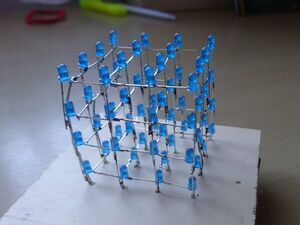
LED Cube 4x4x4 very easy code with shift registers
"When I started to work with Arduino I was fascinating about LED Cube but it went very hard to make it for me. After a time I found out that it can be very easy. In this article I focus mainly on very easy code for LED Cube 4x4x4 with shift registers and how to make diffrent patterns for the cube. I did not like codes I saw in such projects so I had to create it my own way. " [...]

Brainwaves and Eye-blinks Drive a Truck
"Would you like to control things with your mind? This instructable describes how to drive a remote-control truck using brainwaves. The headset senses my brainwaves and transmits them to a small computer. When I increase my attention level or blink my eyes, the computer converts the signals and passes them to the truck’s remote control, which I have connected to the computer. When I concentrate, the wheels spin. 0ne strong eye-blink does a left turn." [...]

DIY Automated Watering System
"In this project I will be showing you how to create an automated watering system. My system is made for my greenhouse, but you can use the general principle for pretty much everything and everywhere. The system uses LoRa for remote communication, so that I can water my plants even when I am on vacation. But there is also a push button to water the plants manually. The mains ingredients for my system are a big water barrel, a solenoid valve, a water level sensor and a long garden hose ;-) Let's get started! Here you can find a parts list: 1x Solenoid Valve 1x Tap 2x Adapter 3x Garden Hose Adapter 1x Sealing Tape 1x Water Level Sensor 1x Relay Board 1x Water Barrel 1x LoRa Radio Node 1x LM7805 Voltage Regulator 1x Solar Panel 1x Solar Charge Controller 1x 12V Battery 1x Wood chest 1x BME280 Sensor" [...]
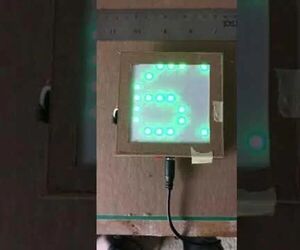
Handheld Arduino LED Matrix Thermometer
"Made for ART3681C - Interactive Electronic Art Supplies: Needed Supplies: Most of the supplies I used were in this ELEGOO Arduino starter kit 1 - ELEGOO Arduino UNO R3 (included in kit) 1 - DHT11 Temperature and Humidity Sensor (included in kit) 6 - Male-to-Male Jumper Wires (included in kit) 1 - 9V Battery with Battery Clip (included in kit) or 1 - 5V Power Adapter (not included) 1 - 8 x 8 WS2812B LED Matrix Thin Heat Shrink Tubing or Electrical Tape Arduino IDE (used to add code to the Arduino) To add code to the Arduino, you'll need a computer nearby, and the USB cable that came included with the kit. Optional Supplies: I had leftover chipboard, Bristol board, and tacky glue to make a screen for the LED Array, but it's not necessary to complete the project. If you want to make the screen I made, you'll need a 3.5" x 3.5" square of any kind of thicker-pressed paper(Bristol board or cardstock are some examples),a small amount of chipboard, and tacky glue to make a frame for the LED Matrix. " [...]
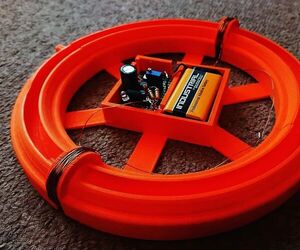
Particle Accelerator Demo
"A while ago I decide to try to make a simple demo of particle accelerator, and I finally managed to do it. In this Instructable I will show you step by step how to make it. Before we start, let me explain briefly how particle accelerators work and what is the role of electric and magnetic filed in them. Particle accelerators use electric fields to speed up and increase the energy of a beam of particles, which are steered and focused by magnetic fields. The particle source (hydrogen gas for example) provides charged particles (protons or electrons), that can be accelerated. The beam of particles travels inside a vacuum in the metal beam pipe." [...]

Pulse Oximeter and Heart Rate Monitor
"Arduinos are incredibly useful tools for all sorts of projects. Given the current COVID-19 pandemic, having easy, fast, cheap, and reliable access to health information is more important than ever. While an Arduino might not be the tool of choice for proper medical applications, we can draw inspiration from medical devices to create fun and interesting projects, which is the goal of this tutorial. In the following steps, you'll learn how to make your own pulse oximeter, which measures blood oxygen levels, and heart rate monitor. These values will be shown on a screen, and your blood oxygen level will also be shown off with visual cues to help determine if it's in an acceptable range. This project is relatively simple but is still a fun way to learn more about the uses of Arduino components." [...]
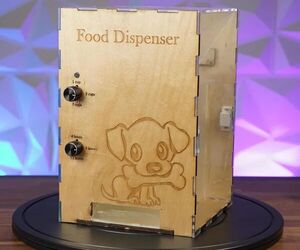
Arduino Dog Food Dispenser
"Want to be able to feed your dog in a timely manner every day but always lose track of time? Look no further; this Instructable will teach you how to build your own Arduino-powered dog food dispenser. I made this for my Students Involved in Discovering Engineering (SIDE) Project for Ms. Berbawy's Principles of Engineering class. The project was a great experience to learn basic circuitry and coding and improve my CAD and Adobe Illustrator skills. Note: This project's inspiration was an Instructable for an Arduino Controlled Dog Food/Treat Dispenser by crazydeadmoth. Multiple changes were incorporated in the design to facilitate easy maintenance, increase stored food capacity, and select the amount of food to be dispensed." [...]

Complete Mechanical 7 Segment Display
"Hello and welcome back! Over the last few months, I am in the process of making a mechanical 7 segment display that uses PCB coils or electromagnets to actuate the segments. I had a lot of fun while learning new things. The project was so well-received, it even got published in Hackspace Magazine, twice! I received many comments as well as suggestions from you all. Thank you, everyone!" [...]
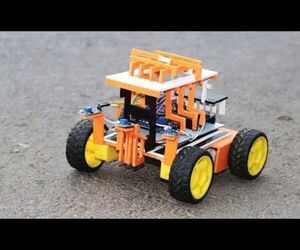
Arduino Light Following Robot With LDR
"Hey there, here in this article, Im going to guide you to make an Arduino Light Following Robot. This is very easy to make (for beginners) Things Used in This Project Hardware components ARDUINO UNO L293D MOTOR DRIVER LDR Sensor Module DC MOTOR 18650 LI-ION BATTERY 18650 LI-ION BATTERY HOLDER CHASSIS FOR BODY PCB BOARD BY JLCPCB JUMPER WIRES SOFTWARE COMPONENTS ARDUINO IDE EASYEDA JLCPCB Hand tools Soldering iron Drill Machine Glue Gun" [...]

Connect LCDs With NodeMCU and Arduino
"Most of our Arduino projects require a way to present us with information about their state, and very often an LED can be enough to indicate if a condition is true or false. But, it is not uncommon that we need to display a lot more than just a Boolean state so we opt-in for using a more advanced solution in the form of a display. In this Instructable, we will look into the Liquid Crystal Displays (or LCDs for short) and how we can connect them in our projects to display the information that we need. This post is sponsored by PCBWay. Get your custom PCBs, SMD stencils, or assembly services professionally done for cheap in less than 24 hours. PCBWay also offers sponsorships for students and hobbyists where you can get your projects built for free." [...]

Tensegrity Planter
"The topic of this Ible is a planter. What is a planter, a container for a plant or small tree and the use in this instance it will be for a small plant. However, its not to be any ordinary planter this one will make use of symmetry and tensegrity. Tensegrity derived from tension and integrity, in that the integrity of the structure is derived from the balance of tension not compression The planter will be formed from two identical 3D printed elements either of which can be used to display the plant but only one at a time simply by rotation. Supplies: 3D Printer Cura Filament - PLA Brass wire 0.4mm diameter. M2.5/10mm screws - Qty 10 Sanding paper - various grades." [...]
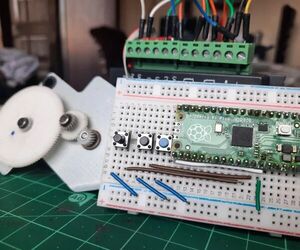
Simple Button Controlled Stepper Motor With Raspberry Pi Pico
"In this quick project, let's make a simple stepper motor controller using some pushbuttons, a Raspberry Pi Pico, and a stepper motor driver. So without further ado, let's get started! For this project, you will need: - A Raspberry Pi Pico - A step/dir-based stepper motor driver(Like A4988, TMC2208, DRV8825, TB6600, etc) - Male jumper wires for making the wiring connections. - A breadboard - 3 normally-open pushbuttons - *Hook-up wires for breadboard - A 12-volt DC power source(Depends on the stepper motor and driver) - A 5-volt DC power source(A 5-volt regulator can also be used instead of a separate supply)" [...]

6*24 Led Matrix Using Arduino And 74HC595 Shift Register
"Hello everyone today we gonna make an arduino 6*24 led matrix its kind of intermediate level project but you can make it very simple I will try to make the project very simple and easy so everyone can understand and I will tell you this project is not that much hard to pursue, if you have the Interest in soldering u made it like butter smooth, and also some logicideology about the basic electronics, since you need to have a glimpse of different electronics components in the later parts of the writeup, but if you don't know how to write arduinocode its not really a problem since I will share the full arduino code with detailed instructions in it, I really appreciate you read what I have written this far.one more thing if you find this project interesting, like and appreciation a sub to my channel is amazing like giving me a support, to make projects like this and keep you folks happy. so lets get right into it........" [...]
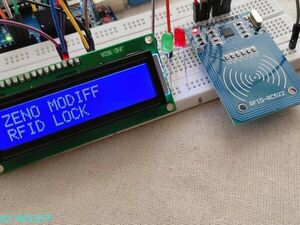
Rfid Lock System
"In This project we gonna make an RFID Lock Easy & Simple ! Today iam going to show you how to make an arduino RFID locksystem. this is a simple project does not require high knowledge about arduino and electronics this is an intermediate level project, so its kind of okay to you. I tried my best to document this project to you, to look simple. so you can also make this project as I do, if you appreciate my work, a sub to my youtube channel will make me happy and keeps me motivated so I can make new projects for you in the near future, so with out further ado lets get started........" [...]

Z80-mbc3
"A 2021 revision of the original MBC design by Fabio Defabis with disk emulation on microSD. Runs CP/M + applications with a VT100 terminal. The Z80-MBC3 is a single board computer available as a kit. It can be assembled by everyone who has basic knowledge of electronics, and is intended for those who like to explore the early days of personal computing from the eighties. The Z80 being the most popular microprocessor then is still available today, and with the help of modern parts the Z80-MBC3 features a fully functional computer with only four integrated circuits, two push buttons, two LEDS, some resistors and capacitors. Those are all through hole (THT) types to ease the soldering process." [...]
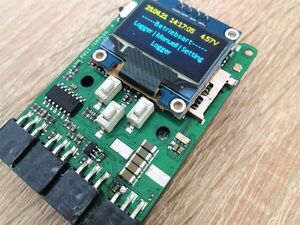
Temperature Datalogger for PT1000 Probes
"A four-channel temperature datalogger for PT1000 probes measured by Atmega32U4 and logged on SD-card. My intention was to develop a temperature measuring and datalogging device because I had none. It should show the temperature measurement data on a display and at the same time store it on a SD card. That was the main requirement I set for myself. In addition, it should have batteries for wireless operation, so the whole system must be designed for low-power consumption. The application is quite simple, you turn on the logger and start the operation." [...]
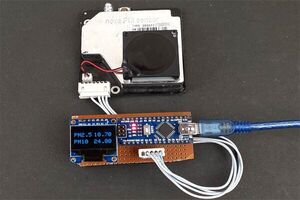
Air Quality Analyzer using Arduino and Nova PM Sensor SDS011 to Measure PM2.5 and PM10
"Air pollution is a major issue in many cities and the air quality index is getting worse every day. According to the World Health Organization report, more people are killed prematurely by the effects of hazardous particles presented in the air than from car accidents. According to the Environmental Protection Agency (EPA), indoor air can be 2 to 5 times more toxic than outdoor air. So here we build a device to monitor air quality by measuring PM2.5 and PM10 particles in the air. We previously used the MQ135 Gas sensor for Air quality monitor and the Sharp GP2Y1014AU0F Sensor for measuring dust density in the air. This time we are using an SDS011 sensor with Arduino Nano to build Air quality Analyser." [...]

A Better LoRa QWERTY Messenger
"Introducing the next iteration of the Ripple LoRa QWERTY Messenger project, now with ultra low power standby mode! The new messenger device is now based on the Heltec LoRa32 V2 development board, instead of the TTGO. There are a number of reasons, but the biggest one being that this board supports a deep sleep mode where the LoRa radio can remain listening for packets! As a result, testing with the same battery, the old model could standby for about 8 hours on one charge, and the new model can now do about 48 hours. A huge improvement. A summary of the differences are: Now uses Heltec board (with deep sleep mode) Does not use SD Card." [...]
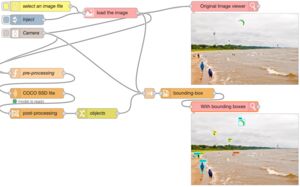
Build a machine learning node for Node-RED using TensorFlow.js
"Combine TensorFlow.js with Node-RED to create AI-enabled Node-RED applications in various environments Lowering the barrier to entry for artificial intelligence (AI) is a goal that is continually strived for. Making AI more widely accessible will not only increase the number of people who actually use AI, but it will also help increase the spread and adoption of AI across many different fields. The world of machine learning can be daunting at first, but there are several approaches to simplify the entire AI app development process. One of these approaches is by combining the use of TensorFlow.js with Node-RED. This tutorial shows you how to use this approach to create AI-enabled Node-RED applications in various environments. What is Node-RED?" [...]

Help you sleep with an ESP8266 projector
"Have you ever stared at the ceiling and found it hard to fall asleep? Try this ESP8266 powered projector! Motivation Once in a while I found it hard to fall asleep, and stared at the ceiling for a long time. I wished there can be some random patterns showing on the ceiling to help me relax. It certainly should not be a real projector that is too bright, nor a smartphone that can only distract. Implementation I tried to make such a projector using an ESP8266 and a small LCD screen." [...]

General Purpose Countdown Timer
"A general purpose countdown timer. Easily settable for up to one hour. Great for the kitchen. Perfect 5 minute eggs! In todays world of Apps for your smart phone, a countdown timer might seem like a bit of a redundant build considering the prolific amount of free timer Apps. As a project, this was a interesting build." [...]
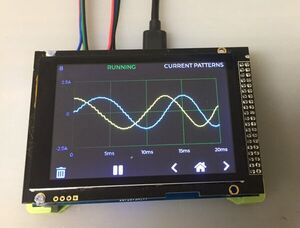
Simple Stepper Motor Analyzer
"Highlights: - Low cost and minimalist DYI hardware design. - Standalone. Doesn't require a computer to operate. - Analyzes the stepper motor signals in the actual system (e.g. a 3D printer). - Galvanically isolated current sensors." [...]
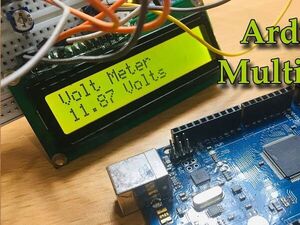
Arduino Voltmeter
"Voltmeter using arduino amd LCD display. Arduino can do a lot of things. This tutorial is about making Arduino voltmeter. Yes, it is possible and more testing equipment can be created using Arduino. First, shall we learn how to make a Volt Meter? How it is worked?" [...]

IOT Based Air Monitoring Mesh System
"A simple array of a few Particle Argons to monitor and report environmental conditions of a mesh network of several spaces. The basis for this project was to utilize a collection of Particle Argons to gather, publish, and chart data pertaining to environmental conditions. The purpose of this data is to aid in the monitoring of a room or space remotely over the internet, as opposed to requiring a physical connection. This allows for separate spaces to be observed from anywhere with internet access. The way this works is through the utilization of the Particle.publish and Particle.subscribe functions provided by the Particle API. These functions send and receive messages from other devices in your network." [...]
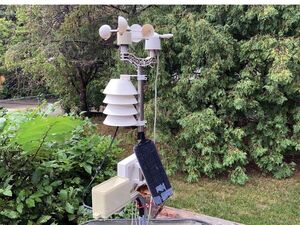
Build a Solar-Powered Weather Station
"“How is the weather?” In modern times, for a reliable answer to that question, you’re much better off asking a machine than a human. Wouldn’t it be fun to build such a device yourself? With that in mind, in this project article, Mark explains how to build your own hobby weather station that is solar powered, runs over Wi-Fi and logs all its data to Adafruit IO. If there is one topic that consistently comes up in small talk, it is the weather. In many of those conversations a huge topic is the unreliability of weather forecasts. In reality, there can be a marked difference in weather even the short distance between me and the nearest government weather station." [...]
Secção Videos
Videos interessantes.
That's all Folks!



